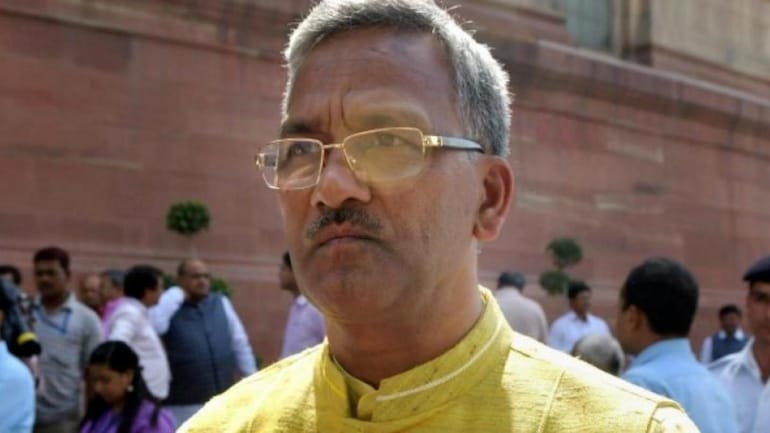
Here's why Rawat joined long list of CMs who couldn't finish term in Uttarakhand

Amid speculations that he has been asked by the BJP leadership to step down due to the ‘poor performance’ of his government, Uttarakhand Chief Minister Trivendra Singh Rawat tendered his resignation on Tuesday (March 9).
Rawat, 60, handed over his resignation to governor Baby Rani Maurya. State minister Dhan Singh Rawat is rumoured to be his likely successor. Dhan Singh, who was in Garhwal, was, in fact, urgently flown in a private chopper to Dehradun on Tuesday afternoon.
Related news: Uttarakhand CM Rawat resigns amid complaints of below-par performance
Incidentally, Rawat is not the only chief minister to put in his papers before the completion of his tenure. The state was carved out from of Uttar Pradesh on November 9, 2000 and since then, in a span of around 20 years, it has seen nine chief ministers. Be it the BJP or the Congress, only one — the late Narayan Dutt Tiwari — has had the distinction of having completed his tenure of five years.
This time around, the state has seen another revolt of BJP legislators, leading to the ouster of Rawat. Dhan Singh Rawat is said to be the frontrunner in the latest list of names doing the rounds for the top post. The others are MPs Ajay Bhatt, Anil Balooni and state minister Satpal Maharaj.
The first chief minister of the state, Nityanand Swami’s tenure was from November 9, 2000 to October 29, 2001. He was succeeded by Bhagat Singh Koshiayari who served as the chief minister from October 30, 2001 to March 1, 2002. Major General (retired) Bhuwan Chandra Khanduri was the chief minister between March 7, 2007 and June 26, 2009 while current Union Education Minister Ramesh Pokhriyal”Nishank held the post from June 27, 2009 to September 10, 2011.
The next chief minister Vijaya Bahuguna’s tenure was from March 13, 2012 to January 31, 2014 while Harish Rawat had three stints from February 1, 2014 to March 27, 2016; from April 21, 2016 to April 22, 2016 and from May 11, 2016 to March 18, 2017. Trivendra Singh Rawat assumed office on March 18, 2017 but could not complete his stint of five years and had to resign today.
The Uttarakhand state assembly consists of 70 seats, which in turn have been carved out of five parliamentary seats of the erstwhile Uttar Pradesh. In almost all big states of the country, one parliamentary constituency has maximum of five to seven assembly seats or segments, but the political demography of this hill state is quite different from the other states.
Political analysts say that there is a sharp divide within the hill state in the regions of Kumaon and Garhwal. Kumaonis and Garhwalis are also culturally and politically divided and it is difficult for any chief minister of the state to maintain a balance between these two communities.
The past few years have seen the Congress and the BJP alternately ruling the state. The Uttarakhand Kranti Dal (UKD), formed by Kashi Singh Airy, Indramani Badoni, Bipin Chandra Tripathi and DD Pant, did not survive for long and the same was the fate of the Bahujan Samaj Party (BSP) in the state.
The two prominent political parties of the state — the Congress and the BJP — are clearly divided in several camps and power circles. Apart from the great Kumaon versus Garhwal divide, there is a sharp Brahmin versus Thakur divide in the state. All the chief ministers that the state has seen have either been Brahmins or Thakurs.
Even though Rawat was not a popular public leader, the BJP had chosen him as the chief minister due to his strong RSS background and the party’s faith in him to be able to work with all leaders and keep all power centres of the state under control.
But this did not happen as there were many leaders who were unhappy with his style of functioning. Some senior leaders were quite vocal in criticising Rawat by saying that he kept more than 40 portfolios with himself but was not able to perform well as chief minister.
As the hill state gears up for the next state assembly elections in 2022, it remains to be seen whether the new chief minister will be able to satisfy all leaders of the party and maintain a balance of power within several active lobbies of the state.
(The author is the editor-in-chief of www.indianpsu.com)

